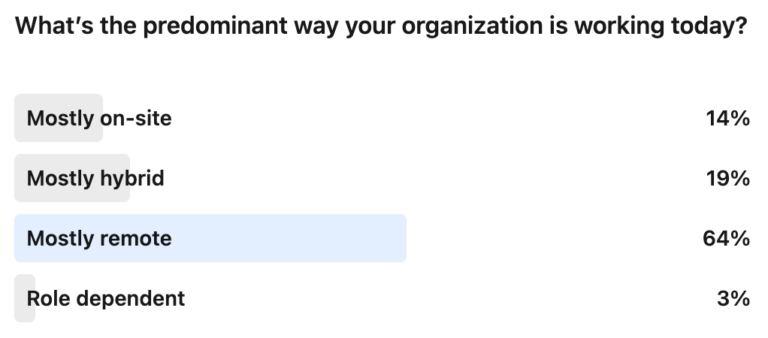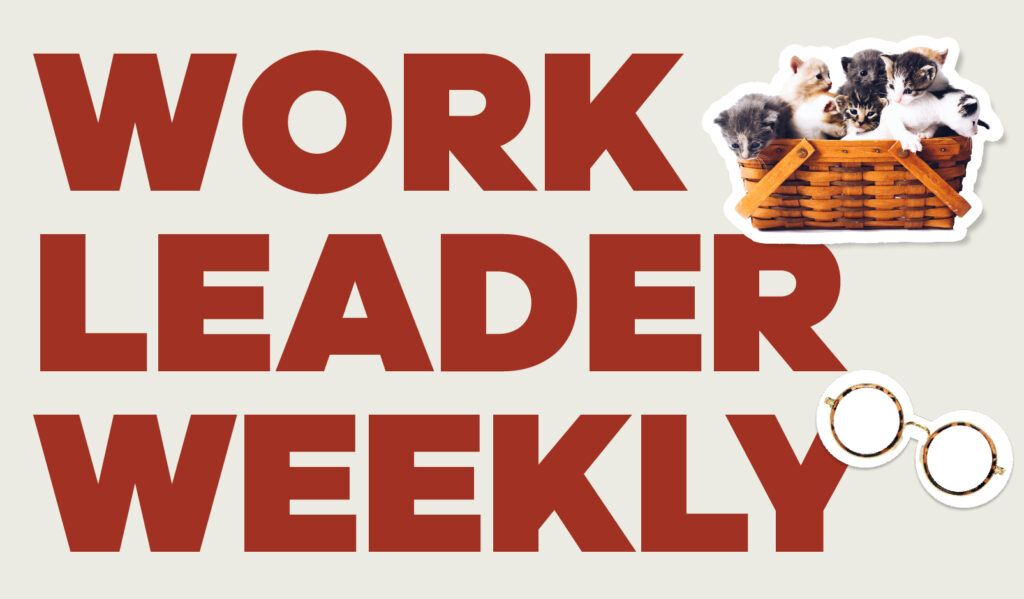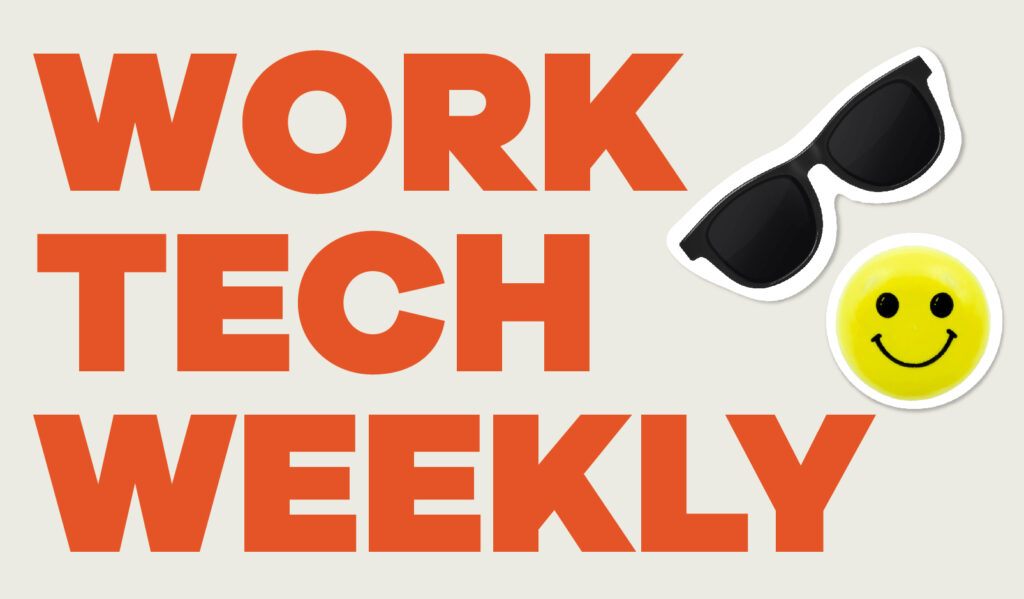Hello.
Greetings from Salt Lake City, where I am here to take in Qualtrics’ X4 Summit. I am excited to hear stories from folks on the front lines of creating great employee experiences. In other news, we wonder if ChatGPT will take HR jobs, taking the joy out of work, and the relevance of personality tests.
Let’s jump into it.
How relevant are personality tests at work today?
I’ve been interested in personality and work for as long as I can remember. Like many folks, the Myers & Briggs personality inventory was my first exposure to the idea (I have tested pretty consistently as an INTP).
Since then, I’ve taken various tests that hope to explain my attitudes and behaviors at work and probably looked at over 100 in my career as people have pitched it as a new wrinkle on an age old issue: How to understand the people we work with.
The New York Times uncovered the trend of using personality tests once again in a long feature this week. The new wrinkle this time was exploring whether personality tests could help us navigate new modes of working in remote and hybrid work environments. The two use cases for leveraging personality tests couldn’t be more different.

Let’s start with the easy use case: Personality tests as a way to understand your co-workers better. In pretty much any work environment where workers are required to collaborate and work closely with one another, this seems like a no-brainer. These tests can be reductive but better versions will focus on finding the nuances of attitudes and behaviors at work. While I won’t make any personal recommendations on which one to use, we use Birkman here at The Starr Conspiracy with generally decent results. Others, including MBTI, can work fine too.
It’s hard to bridge the digital divide, and while people can work together fine remotely on an indefinite basis, I believe in-person moments matter. Adding context to those relationships in between those touchpoints could be one way personality assessments could be uniquely impactful in this weird world of work.
What I am much more skeptical of is using a personality test in any sort of impactful workplace decision, whether it’s about hiring, promotions, development, or dismissals. I will argue that you should be at least a little cautious, too.
First, it’s hard to evaluate the claims of vendors selling these assessments. Plum, one of the providers mentioned in the Times article, seems very well thought out and they promise to improve diversity with their approach. They seem to be intent on succeeding where others have failed by actively avoiding the sort of decisions that leave a workforce full of similar people.
That’s good! But Plum isn’t going to help if it turns out that its assessments had an adverse impact on our workforce for critical staffing decisions. Ultimately, organizations are responsible for vetting how they evaluate talent. Needing both a lawyer and I/O psychologist to look at these programs would be prudent.
It doesn’t give me warm fuzzies that many of the examples used in the Times piece shared that people’s careers were used as test subjects for some of these assessments. Ultimately, you should have confidence in an assessment before deploying it and doing an uncontrolled A/B test doesn’t seem like good methodology or right.
While I may come off as a skeptic, we should also take this in the context of the other factors that drive employment decisions. In a world that hopes to use methods that are predictive of success at work, are personality tests any worse than unstructured interviews, nepotism, or whether you just really like someone because you drank a few beers with them at a Mexican restaurant near DFW airport? Probably not.
But personality assessments must be properly balanced with other factors, hopefully some that reliably evaluate skills and competencies needed for the position. If the results of an assessment tips the scales to another employee or candidate, you better make sure you’re on solid footing before making the decision.
Weekly Linkedin poll result
How is your organization working today? We asked; you answered.
Not surprisingly, many of our readers are still working remote and hybrid (more than 4 out of 5). About 16% of organizations work remotely full-time and 40% are mostly on-site. Nearly every job board provider has released statistics showing that remote roles garner somewhere in the neighborhood of half of the applications even though they make up about 15-20% of open roles.


Four-day workweek
Quick hits from around the web
What else is happening?
- A question at HR Tech: Will ChatGPT take HR jobs? I mean, I have my doubts but there are some interesting thoughts here. (TechTarget)
- The perks workers want also make them more productive. WFH, hybrid, four-day workweeks, and legitimate paid leave programs top the list. (FiveThirtyEight)
- Why is managing in the hybrid world so hard? You’re not alone if this seems more difficult than it needs to be. There are some good places to start here. (Workweek)
- Workday sued over its AI job screening tool, candidate claims discrimination. This is one to keep an eye on, especially if you are a Workday customer. (The Register)
- How to encourage engagement between employees and HR. With the expectations of HR shifting, how do work leaders form new relationships with employees? (HR Brew)
- Microsoft is holding a ‘future of work’ AI event on March 16th. It’ll either be boring or it’ll be something out of the start of an apocalyptic sci-fi film. (Engadget)
- Pay, perks, and remote work: How layoffs and the economy are changing the tech job market. Good interview here with Payscale’s chief people officer. (GeekWire)
- Creating remote work rituals that stick. Good habits, structure, flexibility, and being hyper-self-aware have worked for me. (TechCrunch)
- The ideal office space depends on personality. As organizations look to rethink workspaces, here is some interesting research on individualized approaches. (Futurity)
- Amazon pauses construction of second headquarters in Virginia. Makes you sort of question whether this return to office mandate is going to work like they hope. (CNBC)
- When it comes to office buildings, it’s survival of the fanciest. Interesting to see how much of a difference good space makes. (Axios)
- How a nonlinear workday might help you get more done. I did this for a couple of years but I definitely ended up working more hours. (Fast Company)
- Remote work and mass layoffs are creating a 7-day workweek and erasing old job boundaries. Clawing back some of the balance that was built over the past three years. (Yahoo Finance)
- “Don’t talk to me about joy in work.” Healthcare leaders face unique challenges and it’s sucking the purpose out of their very important roles. (IHI)
An NDA that isn’t hard to swallow
Non-disclosure agreements are often a necessary evil that people can point to when things go wrong and lawyers get involved.
The brilliant folks at interactive design studio Hoax decided to lighten the mood with a new edible NDA:
NDA is an edible non-disclosure agreement that protects in perpetuity all information exchanged within 30 minutes of ingestion. Every NDA is comprised of a size 00 gelatin capsule imprinted with a QR code leading to this website and filled with powder made from copies of this agreement printed onto rice paper with ingestible ink. NDA can be executed by any number of people at once. Simply provide every party with their own capsule before executing the agreement. Parties can extend the duration of effect by consuming additional NDA.
The edible NDA website notes that in order to increase the chance that the agreement is enforceable, they recommend having some sort of persistent evidence that people executed the agreement. We aren’t lawyers though, so we can’t vouch for anything other than this being a little (edible) fun.

That’s it for this week!
Lance




